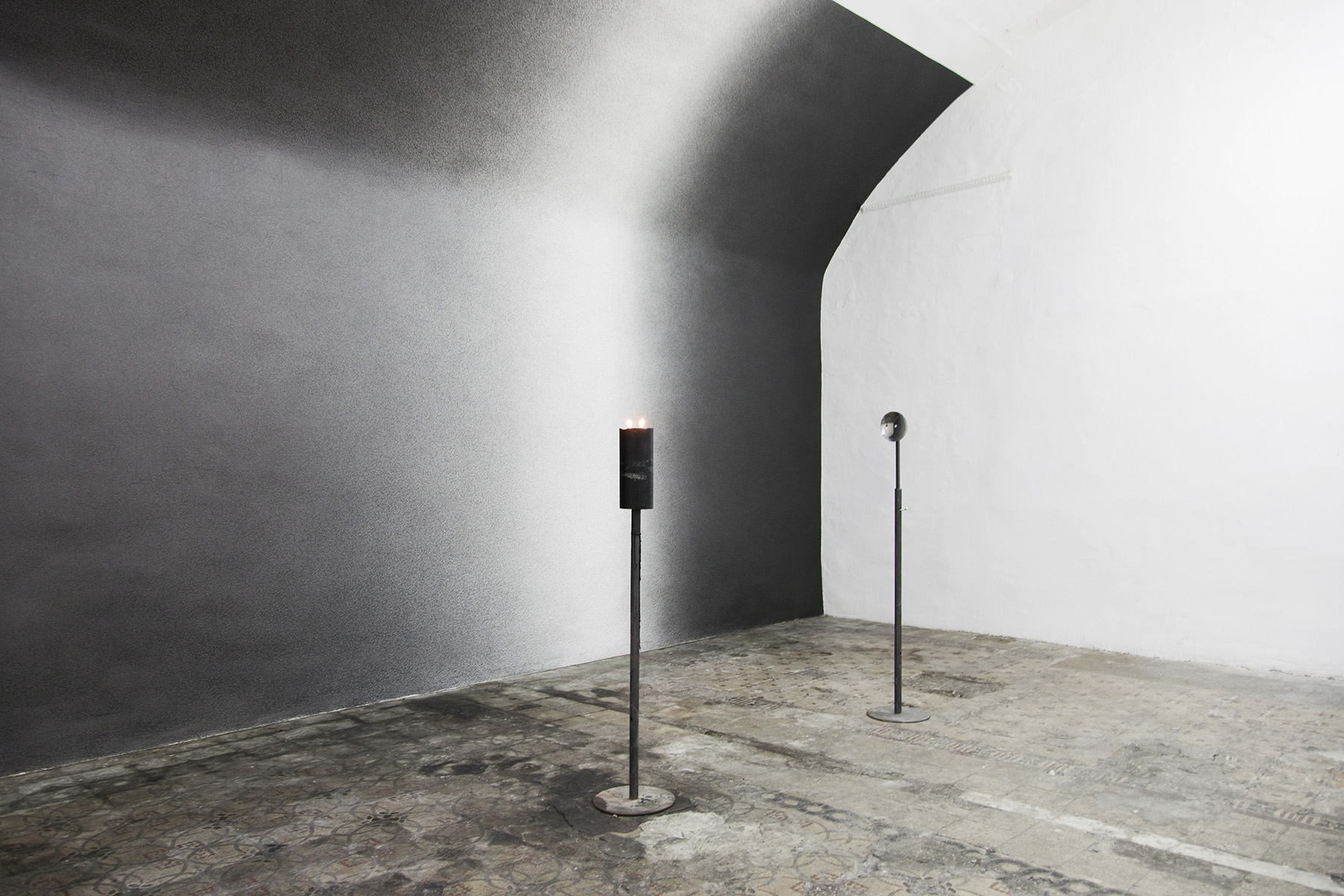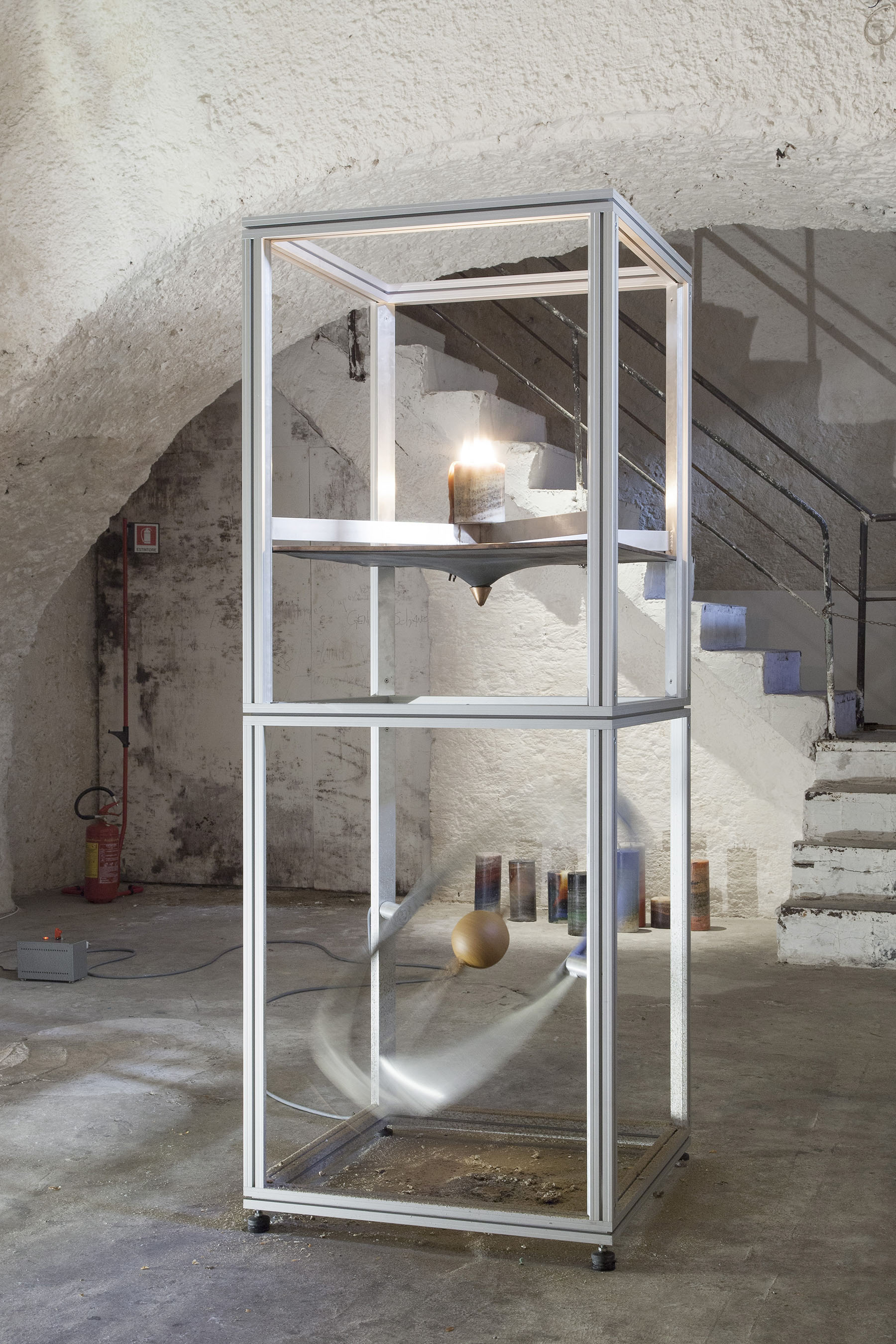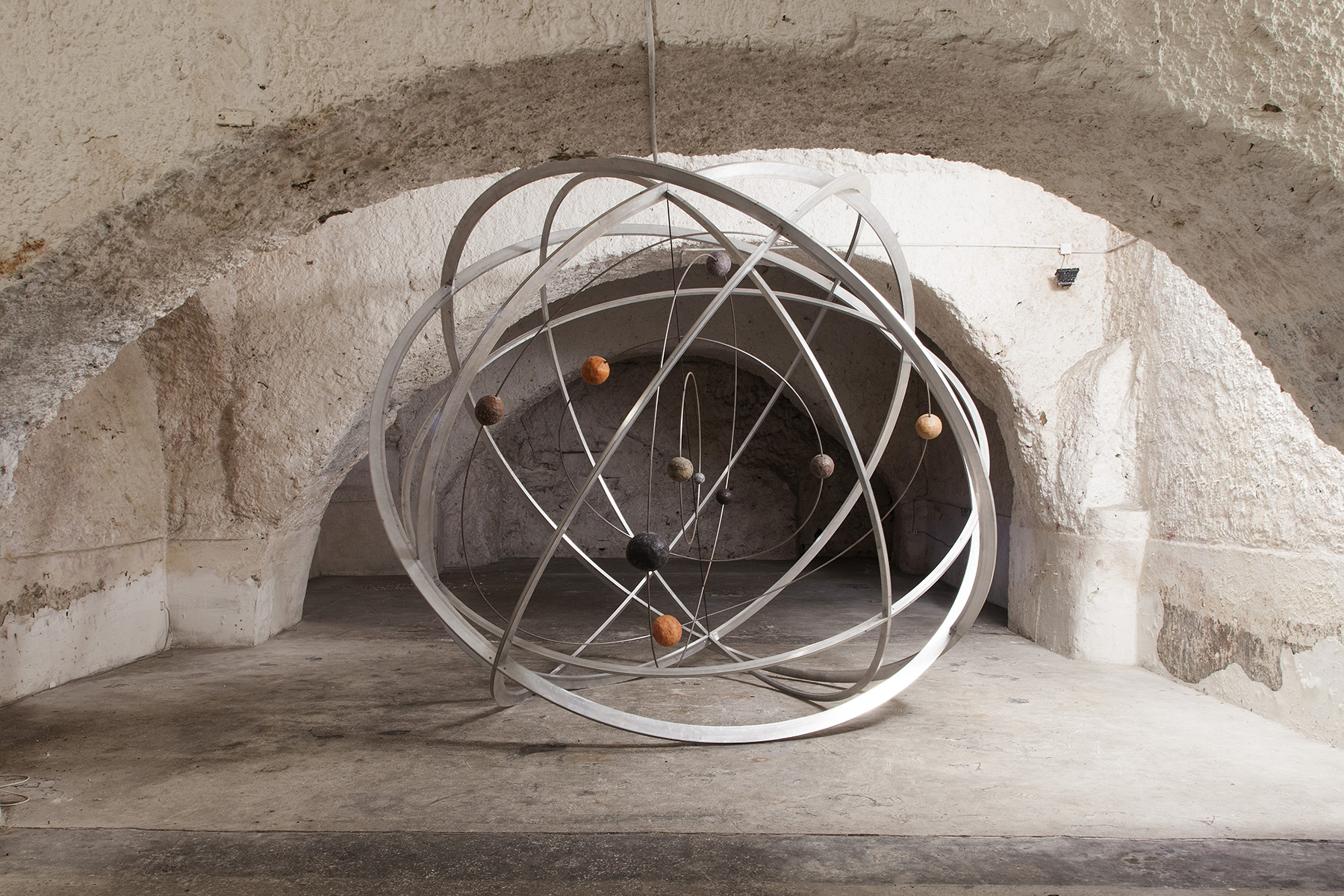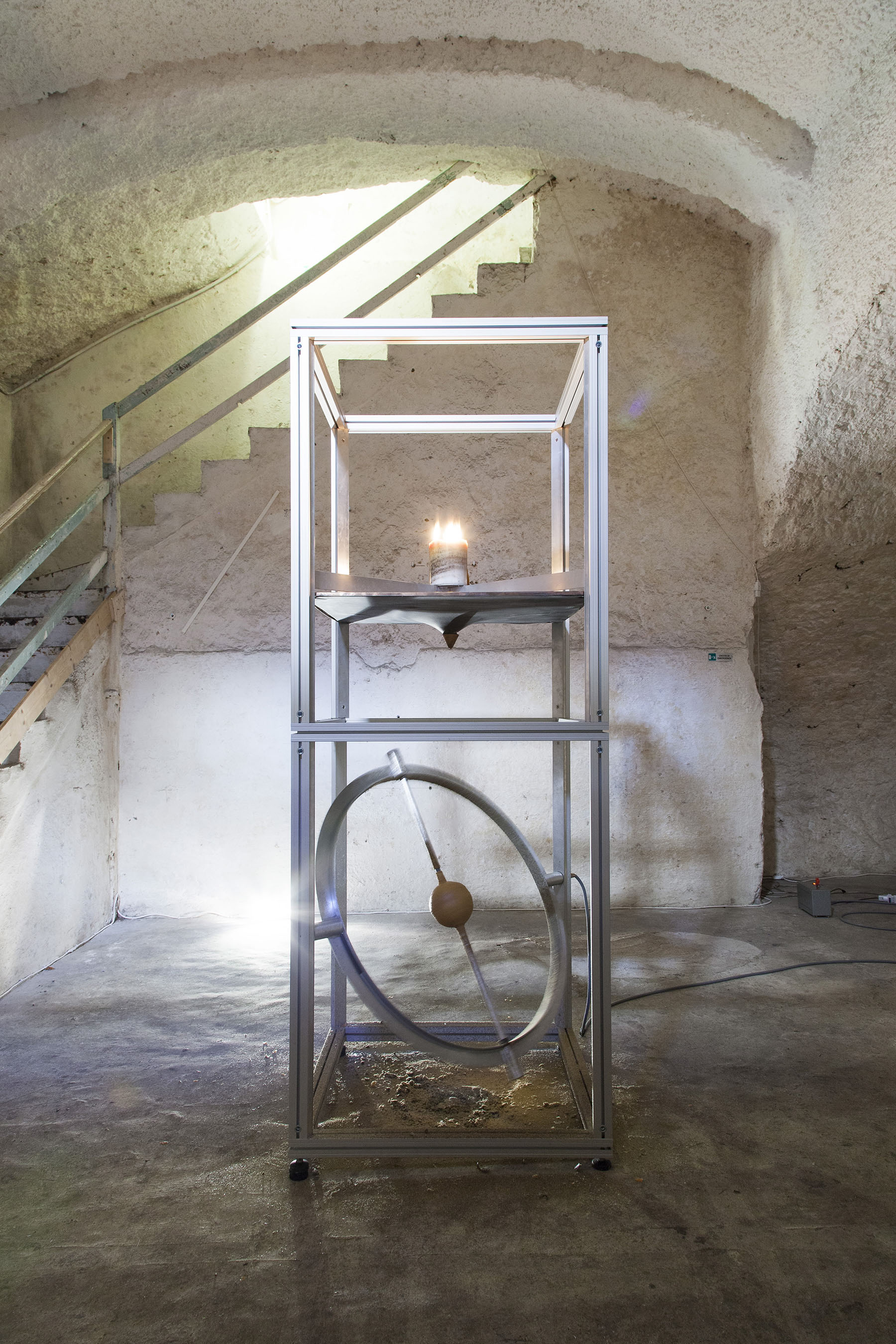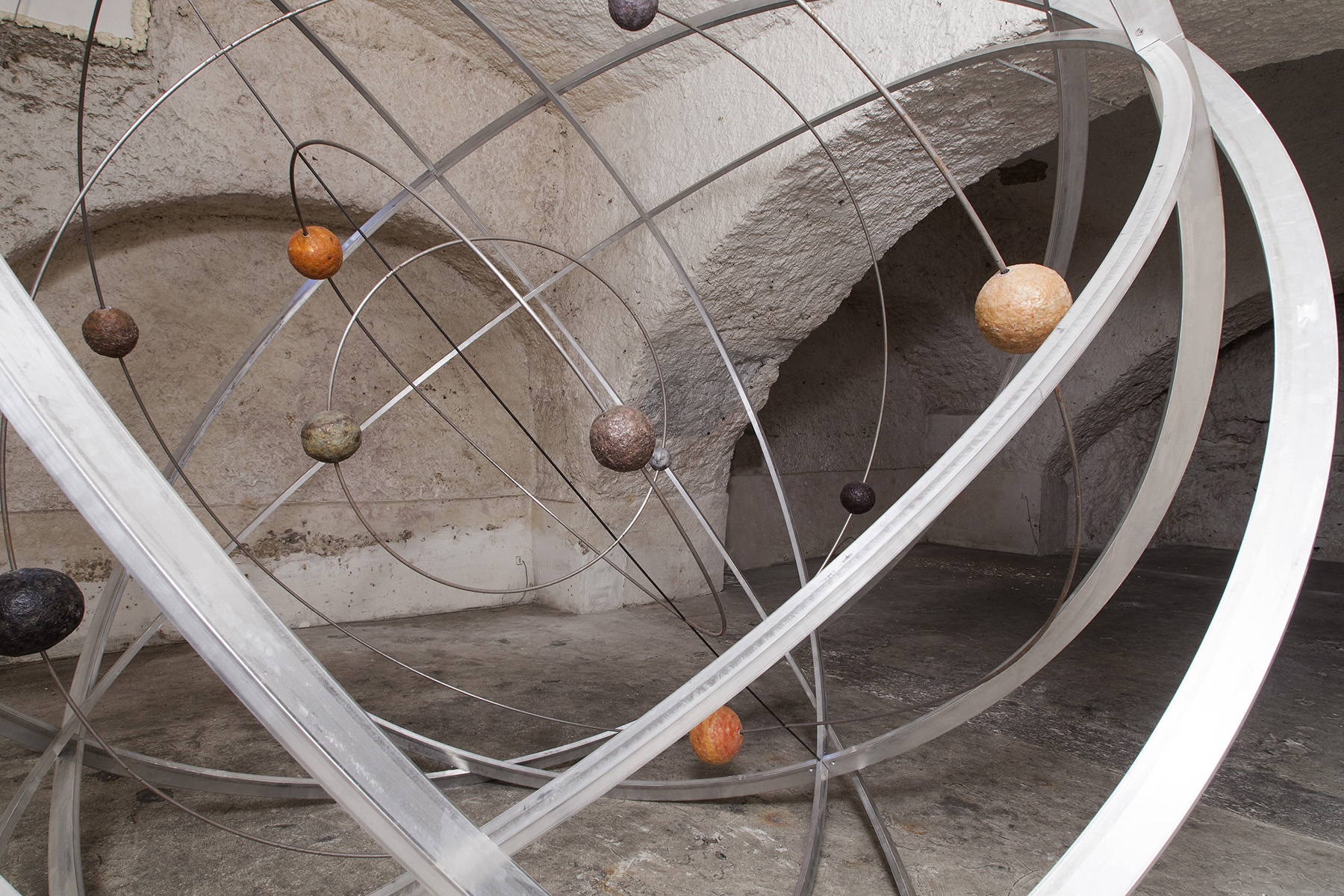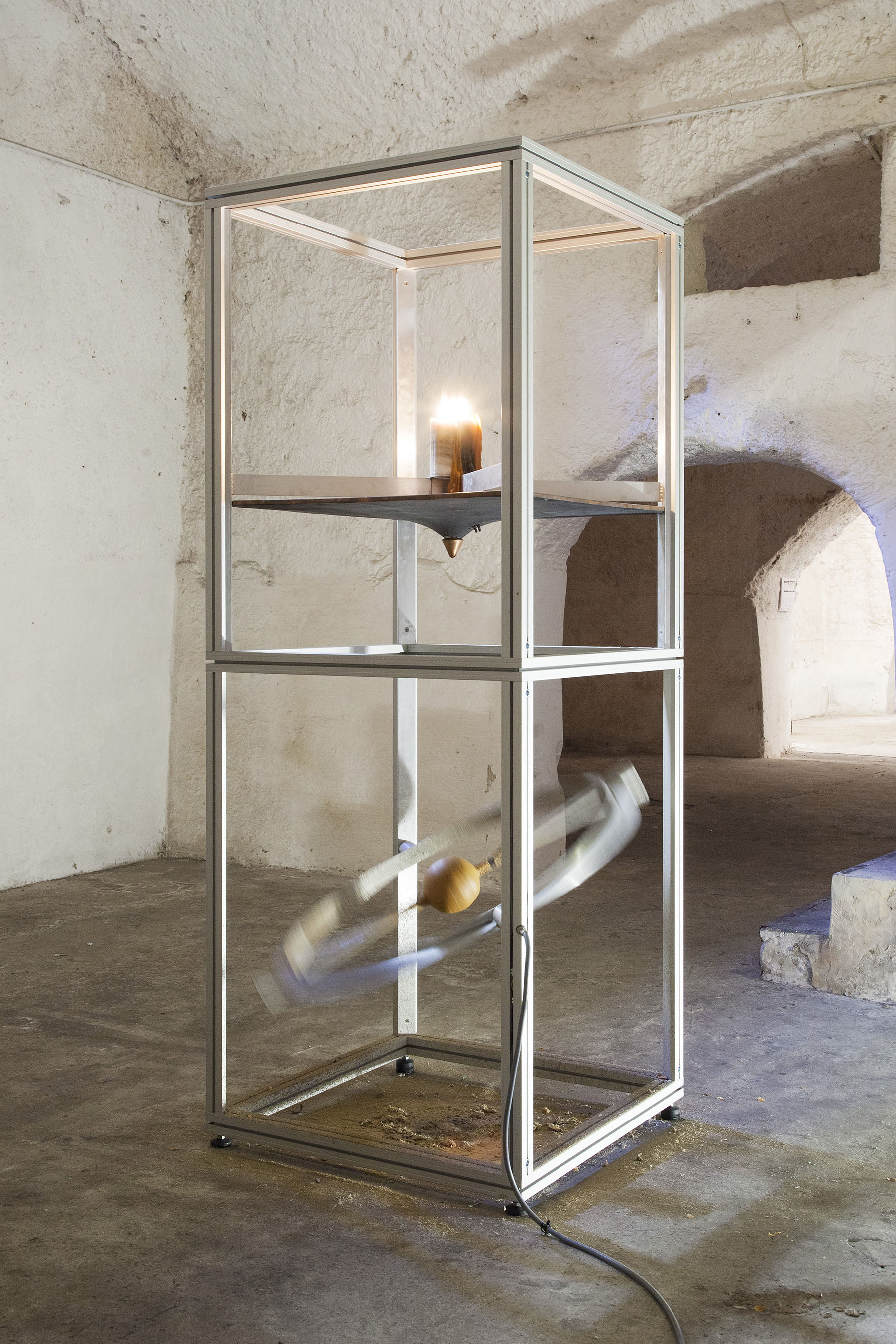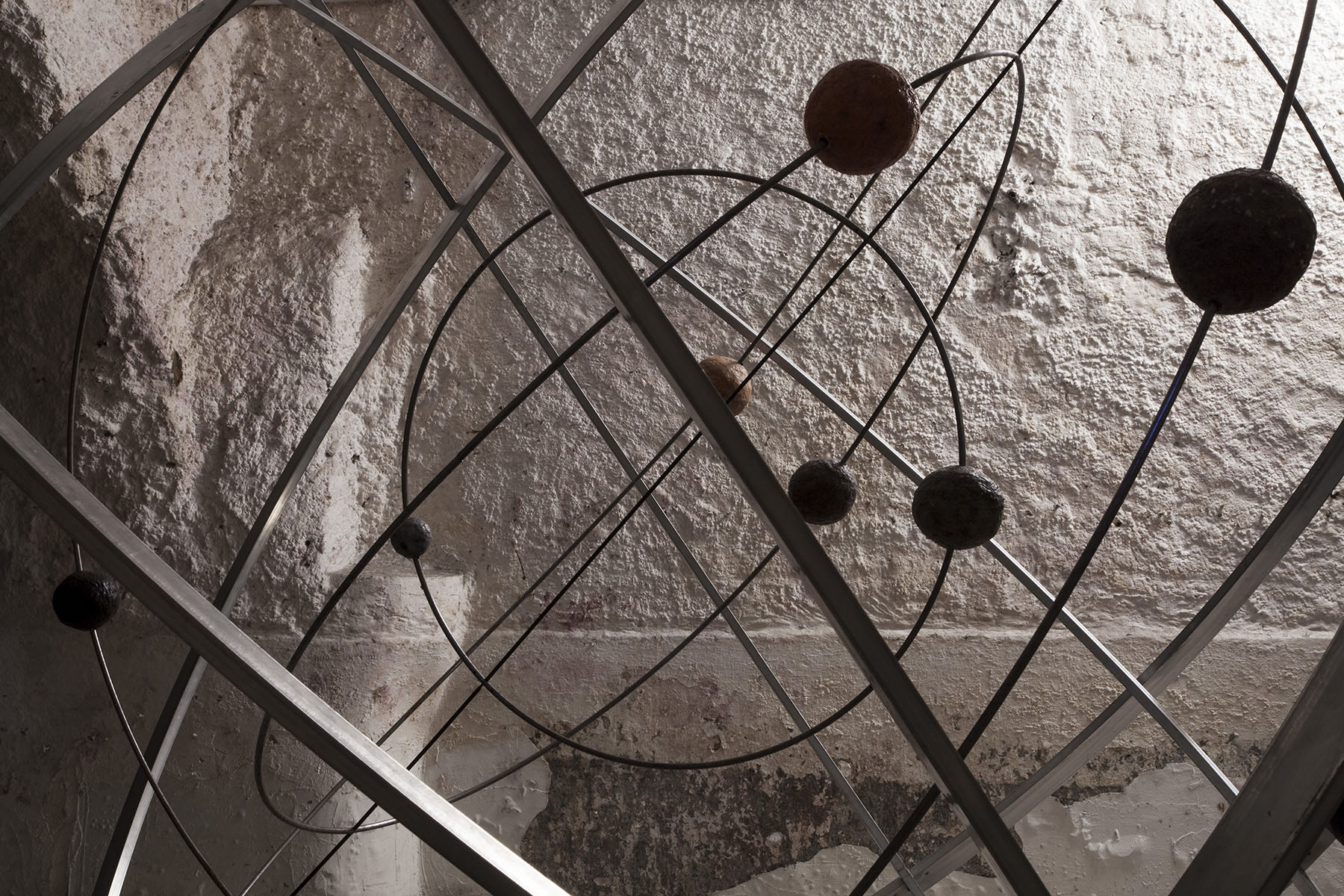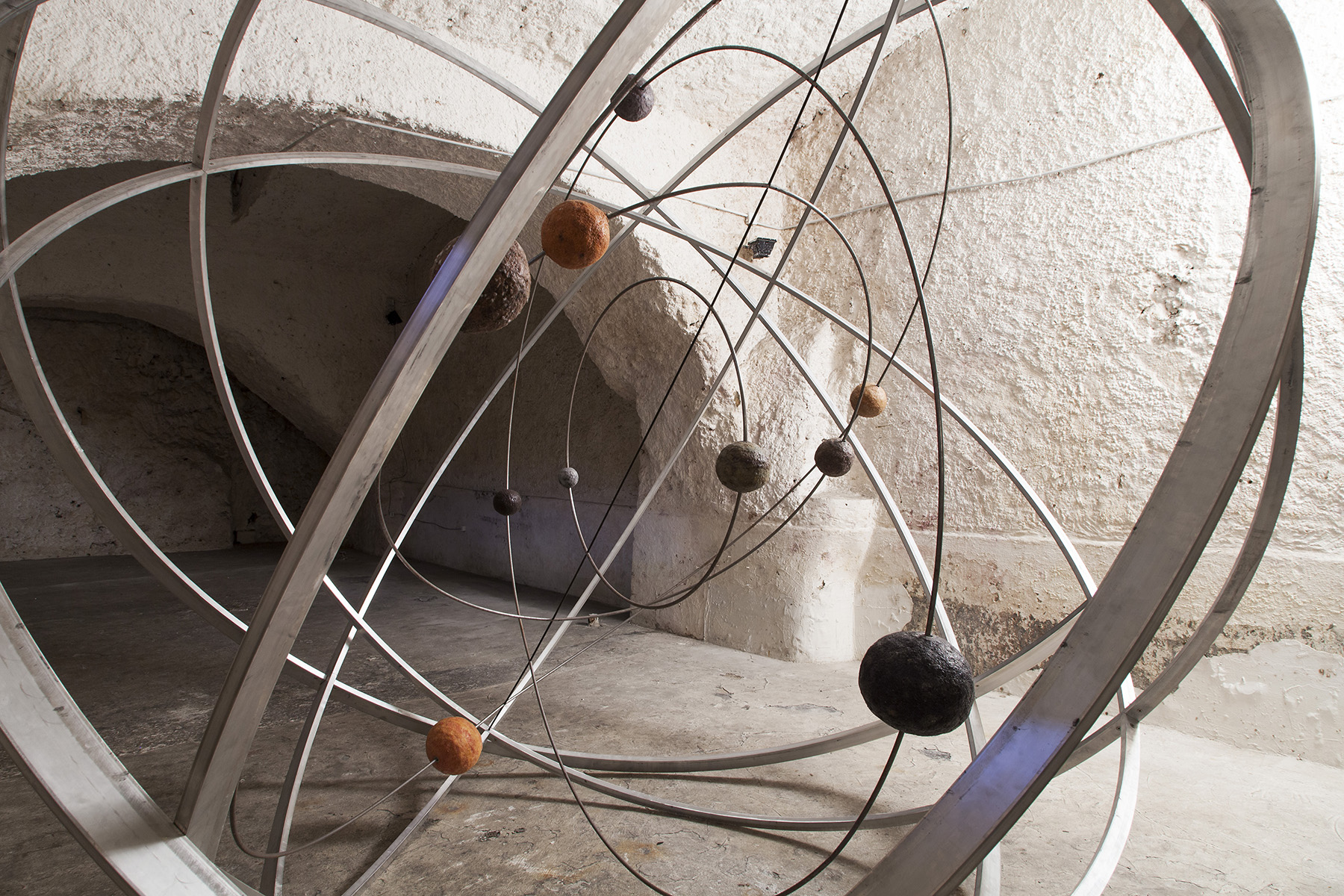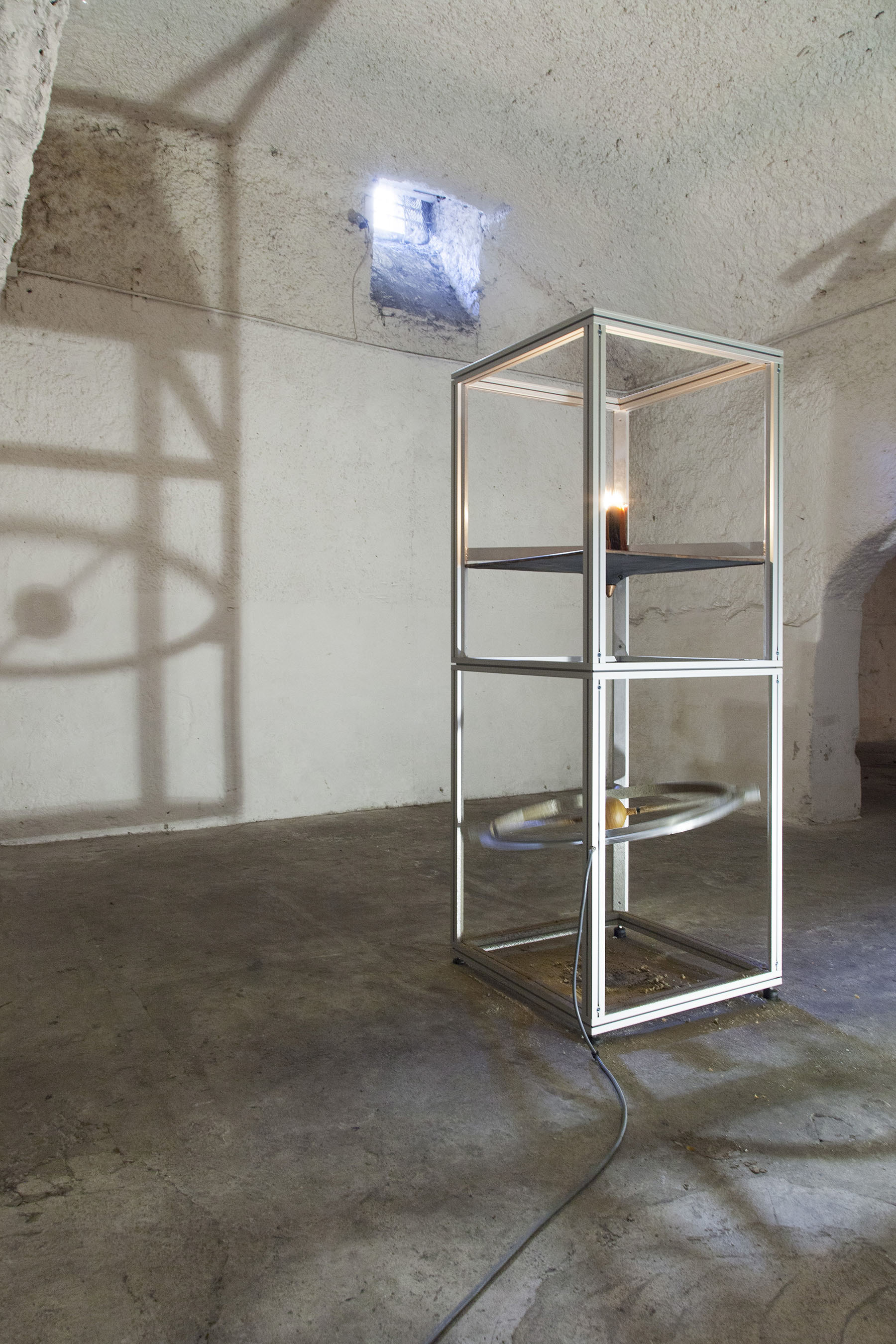19.06.2013 \\ 05.10.2013
Featuring new solo projects by Christian Waldvogel (Zurich) and Eric Wesley (Los Angeles), Fondazione Morra Greco is proud to present the second installment of a series of exhibitions entitled Hybrid Naples: L’ordine delle idee deve procedere secondo l’ordine delle cose.
Waldvogel, in homage to the great philosopher Giordano Bruno who studied in Naples, will present a machine producing planets; and Wesley will exhibit a full knight’s suit of armor built accurately to his idiosyncratic specifications (see more specific descriptions further below). Thus, both projects lend the project not only a pronouncedly historical perspective in a city marked by 3000 years of cultural confluence, but actually expose the dramatic fluctuation between seemingly separate times and places, historical and contemporary things.
The main title of the series reflects on the city of Naples as a continuously rebuilt monument to hybridity. “The open city feels like Naples, the closed city feels like Frankfurt”, wrote Richard Sennett in 2006. Naples here is understood as a city remaining adaptable by improvisation, accommodating diversity and dissonance (for better or worse) rather than over-determined homogenization. But rather than just a current state of things, the idea of an ‘open’, Hybrid Naples also implies three millennia of history: of a place where Greek, Etruscan, Roman, Spanish, German, Dutch, and many other presences have left their mark.
As a cultural reality and technique, hybridity – the crossing and intermingling of different cultural influences and elements – has become a factor dramatically accelerated by contemporary technological environments, from the importance of social media to artists using affordable digital technology. It directly affects what today we understand as being contemporary art: potentially, anything. However, this broadness of possible methods and motifs for current artists should not be understood as randomness. This is what the subtitle of the show is meant to remind of: “the order of ideas must follow the order of things”. It is a quote by the great Neapolitan philosopher Giambattista Vico (1668–1744). It stems from his famous main work Scienza nuova (New Science, 1725), in which he argues that civilization develops in recurring cycles. This axiom “the order of ideas must follow the order of things” asks us to consider that the shared experience of the conditions under which we live gives rise to shared ideas – rather than the other way round (an anticipation of Karl Marx’ famous “being determines consciousness”).
Taking this thought as a cue for the exhibition, it means that the artist’s experience and its reflection in their internal thought processes will give rise to the ideas expressed in their respective projects – rather then these ideas being randomly preconceived products ‘parachuted in’, or merely being the outcome of prescriptive instructions by a curator demanding illustrations of hybridity or any such thing.
The first installments by Max Frisinger – with his sculptural interventions involving the wings of a hydrofoil plane, or simply the wooden scaffolding normally hidden behind a door – and Shana Moulton – with her funnily surreal videos exploring the depths and shallows of commercialized New Age spiritualism and home decoration – were cases in point. Now, it’s Christian Waldvogel’s and Eric Wesley’s turn.
Waldvogel’s studio is space. As in: outer space. Including planet earth. This has nothing to do with megalomania, but with conceptuality. For the Venice Architectural Biennale 2004, with his futurist vision Globus Cassus, he turned the earth inside out like a glove; and in 2010, Earth Turns Without Me involved an actual flight with a Swiss fighter jet. Flying westwards at a speed of 1158 km/h, the sun, as seen from the cockpit, stands still – for as long as this speed, equal to the speed of the earth turning, can be maintained. Waldvogel turned the cockpit into a camera obscura to take a picture of the sun standing still. The elaborate process leads to a simple, humble image. By way of real experiment and speculative scientific enquiry, Waldvogel accelerates Conceptualism and Land Art towards the astronomical.
With his project for Hybrid Naples, Waldvogel turns to Giordano Bruno, the great philosopher born in Nola near Naples. With his cosmology, influenced by Copernicus and Nicolaus Cusanus, Bruno has defined happenstance as the ruling of God’s universe, and he was arguably the first to state, with his De l’Infinito Universo e Mondi published in 1584, that the stars in the sky are really other suns, and that consequently a plurality of other planets, similar to earth, was circling around them. His views have been proven correct by contemporary astronomy (as of 6 June 2013, 891 extrasolar planets have been identified), but back then, this was one of numerous heresies that lead to Bruno being tried by the Inquisition, imprisoned for seven years, and burned at the stake in Rome, in 1600.
Waldvogel’s homage to the great Nolan is Chance Encounters of Happenstance and Negative Entropy (2013). It is a simple-seeming, yet intricately designed machine: on the top of a pedestal-like metal frame, a candle burns, paraffin drips down into a heated funnel, and underneath, two revolving axes – programmed to turn randomly – will gradually produce a globe: Bruno’s ‘other’ planets. Over the course of the exhibition, these planets will be inserted into the aluminum circles of a large Armillary Sphere (2013), forming an imaginary solar system (reminiscent of the historic armillary spheres – metal devices meant to represent our solar system – known to Bruno and his contemporaries). “Eppur si muove” – and yet it moves!
All images Courtesy Fondazione Morra Greco, Napoli
© Amedeo Benestante

